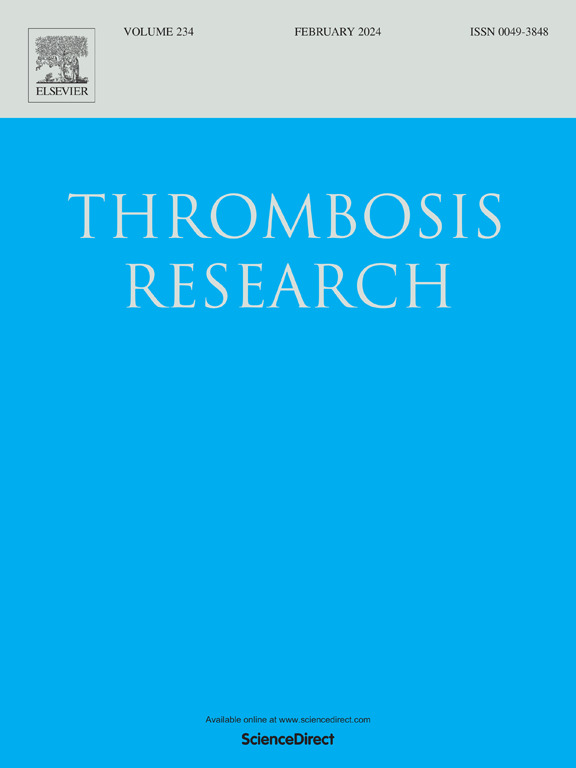不明原因的出血性疾病:病因不同的疾病的聚集。
IF 3.4
3区 医学
Q1 HEMATOLOGY
引用次数: 0
摘要
临床上有明显出血,但止血检查正常的患者被确定为一个独特的群体,称为“不明原因出血障碍”(BDUC)。虽然临床症状通常与实验室确诊的轻度出血性疾病(MBDs)相似,但这些患者必须经过多次实验室检查才能最终被排除诊断,即BDUC。对于这些患者的治疗,无论是全身性出血还是手术前预防,都没有标准的方案或普遍的共识;病人是按照医生的看法或做法来治疗的,许多病人得不到治疗。BDUC患者在创伤、手术和分娩期间出血失控的风险增加。本综述讨论了诊断BDUC所需的标准检查、出血类型、治疗方式和未来前景。研究应集中在止血,非止血和获得性因素导致出血。基于证据的诊断和治疗指南,为临床轻度组患者的特定止血干预是必要的。本文章由计算机程序翻译,如有差异,请以英文原文为准。
Bleeding disorders of unknown cause: A conglomeration of disorders with heterogeneous etiology
Patients with clinically significant bleeding, but with normal hemostatic investigations are identified as a distinct group known as “bleeding disorders of unknown cause” (BDUC). Though the clinical symptoms often resemble that of mild bleeding disorders (MBDs) with confirmed laboratory diagnosis, these patients have to go through multiple laboratory investigations only to end up in a diagnosis of exclusion i.e. BDUC. There are no standard protocols or general consensus on treatment of these patients, either for a generalized bleeding or prophylaxis prior to surgical procedures; patients are treated as per the physician perceptions or practices and many patients go untreated. Patients with BDUC are at increased risk of uncontrolled bleeding during trauma, surgery, and during delivery. Present review discusses the standard tests required for diagnosis of BDUC, type of bleeding, treatment modalities and future perspectives. Research should focus both on hemostatic, non-hemostatic and acquired factors contributing to bleeding. Evidence based diagnostic and treatment guidelines for this clinically mild group of patients are warranted for specific hemostatic interventions.
求助全文
通过发布文献求助,成功后即可免费获取论文全文。
去求助
来源期刊

Thrombosis research
医学-外周血管病
CiteScore
14.60
自引率
4.00%
发文量
364
审稿时长
31 days
期刊介绍:
Thrombosis Research is an international journal dedicated to the swift dissemination of new information on thrombosis, hemostasis, and vascular biology, aimed at advancing both science and clinical care. The journal publishes peer-reviewed original research, reviews, editorials, opinions, and critiques, covering both basic and clinical studies. Priority is given to research that promises novel approaches in the diagnosis, therapy, prognosis, and prevention of thrombotic and hemorrhagic diseases.
 求助内容:
求助内容: 应助结果提醒方式:
应助结果提醒方式:


